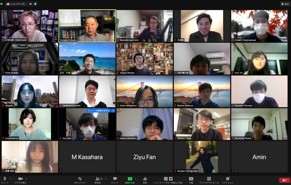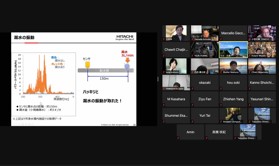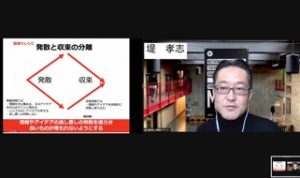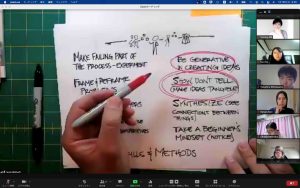・Group of Course:Recognition of Social Issues
・Course:TAL.S502 Professionals & Value Creation Ⅱ
・Program:Creating and establishing new business to solve social issues in the field of social infrastructures
・Guest Speaker:Masahiro Takeshima, General Manager, Social Innovation Business Division, Business Incubation and Development Division, Digital Society Division, General Manager, Sustainable Infrastructure Management Department, and Project Leader, Future Investment Division, Infrastructure Maintenance, Hitachi, Ltd.
・Date & Time:29 /Jan (Fri) 18:00-20:00
On 29/Jan, the lecture and discussion about “Creating and establishing new business to solve social issues in the field of social infrastructures” was held online by Mr. Masahiro Takeshima, Hitachi, Ltd., for both 19 ToTAL students and 5 non-ToTAL students(OPEN students). This year, the workshop was held online via Zoom.
In this workshop, Mr. Masahiro Takeshima of Hitachi Ltd. made a presentation on the theme of “Creating and establishing the new business to solve social issues in the field of social infrastructures”. Specifically, this time he spoke about a project of Hitachi “Pipe Leakage Detection Service” from the starting points, the development of the project, and the achievement of the project.


He first described the product and services of Hitachi. Surprisingly, the actual works that have been done so far in Hitachi are quite different from its image of home appliances. Apart from the electronic products, vehicles, and elevators, they also, recently, move forward a service as data provider for business and other projects. They established “Social Infrastructure Maintenance Platform (社会インフラ保守プラットフォーム)” inside Hitachi, which is providing services using all of the hardware, software, and data available for a specific purpose that supports sustainable society.
In the project of “Pipe Leakage Detection Service (漏水検知サービス)” using ultra-high sensitivity vibration sensor (and also other projects of the Platform), the challenging part is the unseen of the target problem. Because there is no example in the market, no specific know-how to start the project, even no metric to evaluate the results, they have to work as a team to come up with new ideas, new techniques, and new test devices.
Fortunately, by the effort of his team, they recreated the pipe and road to simulate the leakage and the real measurement in the experiment environment. From the speech about his experience in the developing process, I realized the hardship and difficulty in every step to develop the service from the start until becoming a usable service. For example, the technique to differentiate the vibration of on-ground movements, such as cars and trains, from the actual vibration from pipe leakage. On top of that, the design of the hardware and sensor part is also very delicate and on-purpose. The size, shape, and battery serve the purpose very well after several prototypes.
The achievement of the project is well known as it is presented in the publication, media, and programs. Also, the service is adopted by customers globally.


Apart from the obvious accomplishment of the project, I also learned a lot from the insight during the discussion time with Mr. Takeshima. I realized that market research and needs investigation are very essential for product and service development. In the early stage of this project, they discussed with companies in the field and presented the concept of the idea even though they did not have any prototype or concrete result; it was very useful to know the needs and the scale of the existing problem.
Moreover, because the project is pushed in a project-based manner, the work division is more flexible and the execution is faster than the conventional one. Hence, it is hard to believe that the big and complex project is done by a team of 7 people in 4 months.
Personally, looking from a larger scope, I feel the efficiency of these kinds of platforms that provide flexibility to the project manager and project-based working style inside the bigger organization (Hitachi) which is fully equipped with financial support and technical properties.
(reported by Chawit Chaijirawiwat, Master Student, Systems & Control Engineering Major, Department of Systems & Control Engineering, School of Engineering, Tokyo Tech, and 2020 ToTAL student)


